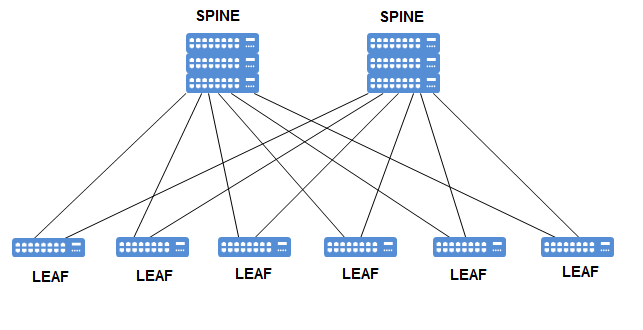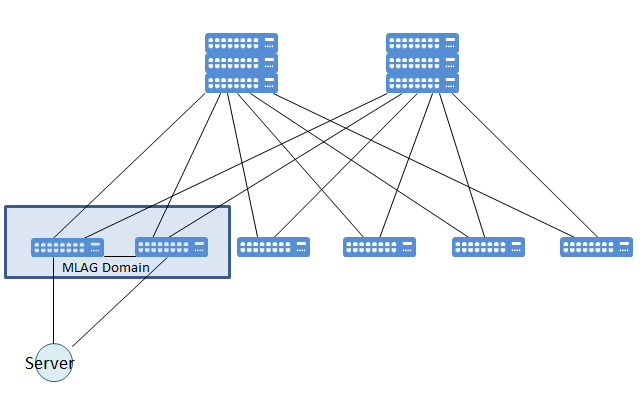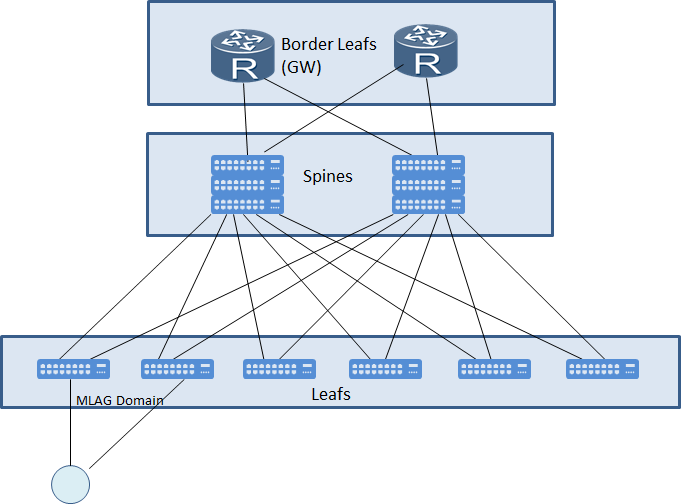In traditional data center networking the architecture consists of core routers, aggregation routers (sometimes called distribution routers), and access switches. Between the aggregation routers and access switches, Spanning Tree Protocol is used to build a loop-free topology for the Layer 2 part of network. This approach has several drawbacks including loops, unused links, unpredictable delays etc.
A new data center design called the Clos network–based spine-and-leaf architecture was developed to overcome these limitations. This architecture has been proven to deliver the high-bandwidth, low-latency, non-blocked links etc.
CLOS topology basically have 2 tier, Spine (Core) and Leaf (Access). Every leaf switch is connected to all Spine switches. The spine layer is the backbone of the network and is responsible for interconnecting all leaf switches.

Note that, every leaf switch is one hop away from any other leaf. By using IP interface between Leaf and Spine connection you can also have the benefit of ECMP. If you need more bandwidth you can simply add new Spines and connect them to leafs.
Using the Overlays (most probably VxLAN overlay) with the data center fabric will provide separated planes. Any changes in underlay will not affect overlay. Once your underlay (data center fabric) is ok, you will just need to configure or program your overlay.
With the new data center architecture we have several overlay technologies including VxLAN and NVGRE. But most common use cases for this architecture are;
- VXLAN flood-and-learn spine-and-leaf network
- VXLAN Multiprotocol Border Gateway Protocol (MP-BGP) Ethernet Virtual Private Network (EVPN) spine-and-leaf network
Leafs can be used with MLAG feature to provide redundancy and high bandwidth for the Servers.

To access internet or other data center location you can install Border Leaf devices as a gateway.
